Dosing & Uses
Dosage Forms & Strengths
capsule
- 10mg
injectable solution
- 10mg/mL
syrup
- 10mg/5mL
tablet
- 20mg
Irritable Bowel Syndrome
20 mg PO q6hr; may increase up to 40 mg q6hr; if efficacy not achieved in 2 weeks or adverse effects require dose <80 mg/day, therapy should be discontinued; safety data not available for doses > 80 mg/day for periods > 2 weeks
10-20 mg IM q6hr; not to exceed 80 mg/day IM
Dosing considerations
- IM use should not be longer than 1-2 days; replace IM with PO as soon as possible
- Do not use IV
Administration
Take 30-60 minutes before a meal
Dosage Forms & Strengths
capsule
- 10mg
injectable solution
- 10mg/mL
syrup
- 10mg/5mL
tablet
- 20mg
Irritable Bowel Syndrome (Off-label)
Infants >6 months: 5 mg PO q6-8hr; not to exceed 20 mg/day PO
Children: 10 mg PO q6-8hr; not to exceed 40 mg/day PO
Administration
Take 30-60 minutes before a meal
Irritable bowel syndrome
10-20 mg PO q6hr; may gradually increase PRN; not to exceed 160 mg/day
Dosing considerations
High incidence of anticholinergic effects; avoid except in short-term situations to decrease secretions (Beers Criteria)
Do not use IM in geriatric patients
Interactions
Interaction Checker
No Results

Contraindicated
Serious - Use Alternative
Significant - Monitor Closely
Minor

Contraindicated (0)
Serious - Use Alternative (7)
- glucagon
glucagon increases toxicity of dicyclomine by Other (see comment). Avoid or Use Alternate Drug. Comment: Coadministration of anticholinergic drugs and glucagon increase the risk of gastrointestinal adverse reactions due to additive effects on inhibition of gastrointestinal motility. .
- glucagon intranasal
glucagon intranasal increases toxicity of dicyclomine by Other (see comment). Avoid or Use Alternate Drug. Comment: Coadministration of anticholinergic drugs and glucagon increase the risk of gastrointestinal adverse reactions due to additive effects on inhibition of gastrointestinal motility. .
- glycopyrronium tosylate topical
glycopyrronium tosylate topical, dicyclomine. Either increases effects of the other by pharmacodynamic synergism. Avoid or Use Alternate Drug. Coadministration of glycopyrronium tosylate topical with other anticholinergic medications may result in additive anticholinergic adverse effects.
- pramlintide
pramlintide, dicyclomine. Either increases effects of the other by pharmacodynamic synergism. Contraindicated. Synergistic inhibition of GI motility.
- revefenacin
revefenacin and dicyclomine both decrease cholinergic effects/transmission. Avoid or Use Alternate Drug. Coadministration may cause additive anticholinergic effects.
- secretin
dicyclomine decreases effects of secretin by pharmacodynamic antagonism. Avoid or Use Alternate Drug. Concomitant use of anticholinergic drugs may cause a hyporesponse to stimulation testing with secretin. Discontinue anticholinergic drugs at least 5 half-lives before administering secretin.
- umeclidinium bromide/vilanterol inhaled
dicyclomine, umeclidinium bromide/vilanterol inhaled. Either increases toxicity of the other by pharmacodynamic synergism. Avoid or Use Alternate Drug. Concomitant use with other anticholinergic-containing drugs may lead to additive anticholinergic adverse effects.
Monitor Closely (101)
- abobotulinumtoxinA
dicyclomine increases effects of abobotulinumtoxinA by pharmacodynamic synergism. Use Caution/Monitor. Drugs with anticholinergic effects may potentiate botulinum toxin effects, which may result in excessive neuromuscular weakness and heighten systemic anticholinergic effects.
- aclidinium
dicyclomine and aclidinium both decrease cholinergic effects/transmission. Use Caution/Monitor.
- amantadine
dicyclomine, amantadine. Mechanism: pharmacodynamic synergism. Use Caution/Monitor. Potential for increased anticholinergic adverse effects.
- amitriptyline
dicyclomine and amitriptyline both decrease cholinergic effects/transmission. Modify Therapy/Monitor Closely.
- amoxapine
dicyclomine and amoxapine both decrease cholinergic effects/transmission. Use Caution/Monitor.
- anticholinergic/sedative combos
anticholinergic/sedative combos and dicyclomine both decrease cholinergic effects/transmission. Use Caution/Monitor.
- aripiprazole
dicyclomine decreases levels of aripiprazole by inhibition of GI absorption. Applies only to oral form of both agents. Use Caution/Monitor.
dicyclomine decreases levels of aripiprazole by pharmacodynamic antagonism. Use Caution/Monitor.
aripiprazole increases effects of dicyclomine by pharmacodynamic synergism. Use Caution/Monitor. Additive anticholinergic effects, possible hypoglycemia. - atracurium
atracurium and dicyclomine both decrease cholinergic effects/transmission. Use Caution/Monitor.
- atropine
atropine and dicyclomine both decrease cholinergic effects/transmission. Use Caution/Monitor.
- atropine IV/IM
atropine IV/IM and dicyclomine both decrease cholinergic effects/transmission. Use Caution/Monitor.
- belladonna alkaloids
belladonna alkaloids and dicyclomine both decrease cholinergic effects/transmission. Use Caution/Monitor.
- belladonna and opium
dicyclomine and belladonna and opium both decrease cholinergic effects/transmission. Use Caution/Monitor.
- benperidol
dicyclomine decreases levels of benperidol by inhibition of GI absorption. Applies only to oral form of both agents. Use Caution/Monitor.
dicyclomine decreases levels of benperidol by pharmacodynamic antagonism. Use Caution/Monitor.
benperidol increases effects of dicyclomine by pharmacodynamic synergism. Use Caution/Monitor. Additive anticholinergic effects, possible hypoglycemia. - benztropine
benztropine and dicyclomine both decrease cholinergic effects/transmission. Use Caution/Monitor. Additive anticholinergic adverse effects may be seen with concurrent use.
- bethanechol
bethanechol increases and dicyclomine decreases cholinergic effects/transmission. Effect of interaction is not clear, use caution. Use Caution/Monitor.
- buprenorphine, long-acting injection
buprenorphine, long-acting injection increases effects of dicyclomine by pharmacodynamic synergism. Use Caution/Monitor. Coadministration of buprenorphine with anticholinergic drugs may increase risk of urinary retention and/or severe constipation, which may lead to paralytic ileus.
- carbachol
carbachol increases and dicyclomine decreases cholinergic effects/transmission. Effect of interaction is not clear, use caution. Use Caution/Monitor.
- cevimeline
cevimeline increases and dicyclomine decreases cholinergic effects/transmission. Effect of interaction is not clear, use caution. Use Caution/Monitor.
- chlorpromazine
dicyclomine decreases levels of chlorpromazine by inhibition of GI absorption. Applies only to oral form of both agents. Use Caution/Monitor.
dicyclomine decreases levels of chlorpromazine by pharmacodynamic antagonism. Use Caution/Monitor.
chlorpromazine increases effects of dicyclomine by pharmacodynamic synergism. Use Caution/Monitor. Additive anticholinergic effects, possible hypoglycemia. - cisatracurium
cisatracurium and dicyclomine both decrease cholinergic effects/transmission. Use Caution/Monitor.
- clomipramine
dicyclomine and clomipramine both decrease cholinergic effects/transmission. Use Caution/Monitor.
- clozapine
dicyclomine decreases levels of clozapine by inhibition of GI absorption. Applies only to oral form of both agents. Use Caution/Monitor.
dicyclomine decreases levels of clozapine by pharmacodynamic antagonism. Use Caution/Monitor.
clozapine increases effects of dicyclomine by pharmacodynamic synergism. Use Caution/Monitor. Additive anticholinergic effects, possible hypoglycemia. - cyclizine
cyclizine and dicyclomine both decrease cholinergic effects/transmission. Use Caution/Monitor.
- cyclobenzaprine
cyclobenzaprine and dicyclomine both decrease cholinergic effects/transmission. Use Caution/Monitor.
- darifenacin
darifenacin and dicyclomine both decrease cholinergic effects/transmission. Use Caution/Monitor.
- daxibotulinumtoxinA
dicyclomine increases effects of daxibotulinumtoxinA by pharmacodynamic synergism. Use Caution/Monitor. Drugs with anticholinergic effects may potentiate botulinum toxin effects, which may result in excessive neuromuscular weakness and heighten systemic anticholinergic effects.
- diphenhydramine
dicyclomine and diphenhydramine both decrease cholinergic effects/transmission. Use Caution/Monitor.
- donepezil
donepezil increases and dicyclomine decreases cholinergic effects/transmission. Effect of interaction is not clear, use caution. Use Caution/Monitor.
- donepezil transdermal
donepezil transdermal, dicyclomine. Either decreases effects of the other by pharmacodynamic antagonism. Use Caution/Monitor.
- dosulepin
dicyclomine and dosulepin both decrease cholinergic effects/transmission. Use Caution/Monitor.
- doxepin
dicyclomine and doxepin both decrease cholinergic effects/transmission. Use Caution/Monitor.
- droperidol
dicyclomine decreases levels of droperidol by inhibition of GI absorption. Applies only to oral form of both agents. Use Caution/Monitor.
dicyclomine decreases levels of droperidol by pharmacodynamic antagonism. Use Caution/Monitor.
droperidol increases effects of dicyclomine by pharmacodynamic synergism. Use Caution/Monitor. Additive anticholinergic effects, possible hypoglycemia. - echothiophate iodide
echothiophate iodide increases and dicyclomine decreases cholinergic effects/transmission. Effect of interaction is not clear, use caution. Use Caution/Monitor.
- fesoterodine
dicyclomine and fesoterodine both decrease cholinergic effects/transmission. Use Caution/Monitor.
- flavoxate
dicyclomine and flavoxate both decrease cholinergic effects/transmission. Use Caution/Monitor.
- fluphenazine
dicyclomine decreases levels of fluphenazine by inhibition of GI absorption. Applies only to oral form of both agents. Use Caution/Monitor.
dicyclomine decreases levels of fluphenazine by pharmacodynamic antagonism. Use Caution/Monitor.
fluphenazine increases effects of dicyclomine by pharmacodynamic synergism. Use Caution/Monitor. Additive anticholinergic effects, possible hypoglycemia. - galantamine
galantamine increases and dicyclomine decreases cholinergic effects/transmission. Effect of interaction is not clear, use caution. Use Caution/Monitor.
- glycopyrrolate
dicyclomine and glycopyrrolate both decrease cholinergic effects/transmission. Use Caution/Monitor.
- glycopyrrolate inhaled
dicyclomine and glycopyrrolate inhaled both decrease cholinergic effects/transmission. Use Caution/Monitor.
- haloperidol
dicyclomine decreases levels of haloperidol by inhibition of GI absorption. Applies only to oral form of both agents. Use Caution/Monitor.
dicyclomine decreases levels of haloperidol by pharmacodynamic antagonism. Use Caution/Monitor.
haloperidol increases effects of dicyclomine by pharmacodynamic synergism. Use Caution/Monitor. Additive anticholinergic effects, possible hypoglycemia. - henbane
dicyclomine and henbane both decrease cholinergic effects/transmission. Use Caution/Monitor.
- homatropine
dicyclomine and homatropine both decrease cholinergic effects/transmission. Use Caution/Monitor.
- huperzine A
huperzine A increases and dicyclomine decreases cholinergic effects/transmission. Effect of interaction is not clear, use caution. Use Caution/Monitor.
- hyoscyamine
dicyclomine and hyoscyamine both decrease cholinergic effects/transmission. Use Caution/Monitor.
- hyoscyamine spray
dicyclomine and hyoscyamine spray both decrease cholinergic effects/transmission. Use Caution/Monitor.
- iloperidone
dicyclomine decreases levels of iloperidone by inhibition of GI absorption. Applies only to oral form of both agents. Use Caution/Monitor.
dicyclomine decreases levels of iloperidone by pharmacodynamic antagonism. Use Caution/Monitor.
iloperidone increases effects of dicyclomine by pharmacodynamic synergism. Use Caution/Monitor. Additive anticholinergic effects, possible hypoglycemia. - imipramine
dicyclomine and imipramine both decrease cholinergic effects/transmission. Use Caution/Monitor.
- incobotulinumtoxinA
dicyclomine increases effects of incobotulinumtoxinA by pharmacodynamic synergism. Use Caution/Monitor. Drugs with anticholinergic effects may potentiate botulinum toxin effects, which may result in excessive neuromuscular weakness and heighten systemic anticholinergic effects.
- ipratropium
dicyclomine and ipratropium both decrease cholinergic effects/transmission. Use Caution/Monitor. Due to the poor systemic absorption of ipratropium, interaction unlikely at regularly recommended dosages.
- letibotulinumtoxinA
dicyclomine increases effects of letibotulinumtoxinA by pharmacodynamic synergism. Use Caution/Monitor. Drugs with anticholinergic effects may potentiate botulinum toxin effects, which may result in excessive neuromuscular weakness and heighten systemic anticholinergic effects.
- levodopa
dicyclomine, levodopa. Other (see comment). Use Caution/Monitor. Comment: Anticholinergic agents may enhance the therapeutic effects of levodopa; however, anticholinergic agents can exacerbate tardive dyskinesia. In high dosage, anticholinergics may decrease the effects of levodopa by delaying its GI absorption. .
- lofepramine
dicyclomine and lofepramine both decrease cholinergic effects/transmission. Use Caution/Monitor.
- loxapine
dicyclomine decreases levels of loxapine by inhibition of GI absorption. Applies only to oral form of both agents. Use Caution/Monitor.
dicyclomine decreases levels of loxapine by pharmacodynamic antagonism. Use Caution/Monitor.
loxapine increases effects of dicyclomine by pharmacodynamic synergism. Use Caution/Monitor. Additive anticholinergic effects, possible hypoglycemia. - loxapine inhaled
loxapine inhaled increases effects of dicyclomine by pharmacodynamic synergism. Use Caution/Monitor. Additive anticholinergic effects, possible hypoglycemia.
dicyclomine decreases levels of loxapine inhaled by pharmacodynamic antagonism. Use Caution/Monitor. - maprotiline
dicyclomine and maprotiline both decrease cholinergic effects/transmission. Use Caution/Monitor.
- meclizine
dicyclomine and meclizine both decrease cholinergic effects/transmission. Use Caution/Monitor.
- methscopolamine
dicyclomine and methscopolamine both decrease cholinergic effects/transmission. Use Caution/Monitor.
- metoclopramide intranasal
dicyclomine will decrease the level or effect of metoclopramide intranasal by Other (see comment). Use Caution/Monitor. Coadministration of metoclopramide intranasal with drugs that impair GI motility may decrease systemic absorption of metoclopramide. Monitor for reduced therapeutic effect.
- neostigmine
neostigmine increases and dicyclomine decreases cholinergic effects/transmission. Effect of interaction is not clear, use caution. Use Caution/Monitor.
- nortriptyline
dicyclomine and nortriptyline both decrease cholinergic effects/transmission. Use Caution/Monitor.
- olanzapine
dicyclomine decreases levels of olanzapine by inhibition of GI absorption. Applies only to oral form of both agents. Use Caution/Monitor.
dicyclomine decreases levels of olanzapine by pharmacodynamic antagonism. Use Caution/Monitor.
olanzapine increases effects of dicyclomine by pharmacodynamic synergism. Use Caution/Monitor. Additive anticholinergic effects, possible hypoglycemia. - olanzapine/samidorphan
dicyclomine, olanzapine/samidorphan. Either increases effects of the other by pharmacodynamic synergism. Use Caution/Monitor. Coadministration of olanzapine and other drugs with anticholinergic (antimuiscarinic) activity can increase risk for severe gastrointestinal adverse reactions related to hypomotility. .
- oliceridine
dicyclomine increases toxicity of oliceridine by Other (see comment). Use Caution/Monitor. Comment: Anticholinergic drugs may increase risk of urinary retention and/or severe constipation, which may lead to paralytic ileus. Monitor for signs of urinary retention or reduced gastric motility if oliceridine is coadministered with anticholinergics.
- onabotulinumtoxinA
dicyclomine increases effects of onabotulinumtoxinA by pharmacodynamic synergism. Use Caution/Monitor. Drugs with anticholinergic effects may potentiate botulinum toxin effects, which may result in excessive neuromuscular weakness and heighten systemic anticholinergic effects.
- orphenadrine
dicyclomine and orphenadrine both decrease cholinergic effects/transmission. Use Caution/Monitor.
- oxybutynin
dicyclomine and oxybutynin both decrease cholinergic effects/transmission. Use Caution/Monitor.
- oxybutynin topical
dicyclomine and oxybutynin topical both decrease cholinergic effects/transmission. Use Caution/Monitor.
- oxybutynin transdermal
dicyclomine and oxybutynin transdermal both decrease cholinergic effects/transmission. Use Caution/Monitor.
- paliperidone
dicyclomine decreases levels of paliperidone by inhibition of GI absorption. Applies only to oral form of both agents. Use Caution/Monitor.
dicyclomine decreases levels of paliperidone by pharmacodynamic antagonism. Use Caution/Monitor.
paliperidone increases effects of dicyclomine by pharmacodynamic synergism. Use Caution/Monitor. Additive anticholinergic effects, possible hypoglycemia. - pancuronium
dicyclomine and pancuronium both decrease cholinergic effects/transmission. Use Caution/Monitor.
- perphenazine
dicyclomine decreases levels of perphenazine by inhibition of GI absorption. Applies only to oral form of both agents. Use Caution/Monitor.
dicyclomine decreases levels of perphenazine by pharmacodynamic antagonism. Use Caution/Monitor.
perphenazine increases effects of dicyclomine by pharmacodynamic synergism. Use Caution/Monitor. Additive anticholinergic effects, possible hypoglycemia. - physostigmine
physostigmine increases and dicyclomine decreases cholinergic effects/transmission. Effect of interaction is not clear, use caution. Use Caution/Monitor.
- pilocarpine
pilocarpine increases and dicyclomine decreases cholinergic effects/transmission. Effect of interaction is not clear, use caution. Use Caution/Monitor.
- pimozide
dicyclomine decreases levels of pimozide by inhibition of GI absorption. Applies only to oral form of both agents. Use Caution/Monitor.
dicyclomine decreases levels of pimozide by pharmacodynamic antagonism. Use Caution/Monitor.
pimozide increases effects of dicyclomine by pharmacodynamic synergism. Use Caution/Monitor. Additive anticholinergic effects, possible hypoglycemia. - prabotulinumtoxinA
dicyclomine increases effects of prabotulinumtoxinA by pharmacodynamic synergism. Use Caution/Monitor. Drugs with anticholinergic effects may potentiate botulinum toxin effects, which may result in excessive neuromuscular weakness and heighten systemic anticholinergic effects.
- pralidoxime
dicyclomine and pralidoxime both decrease cholinergic effects/transmission. Use Caution/Monitor.
- prochlorperazine
dicyclomine decreases levels of prochlorperazine by inhibition of GI absorption. Applies only to oral form of both agents. Use Caution/Monitor.
dicyclomine decreases levels of prochlorperazine by pharmacodynamic antagonism. Use Caution/Monitor.
prochlorperazine increases effects of dicyclomine by pharmacodynamic synergism. Use Caution/Monitor. Additive anticholinergic effects, possible hypoglycemia. - promethazine
dicyclomine decreases levels of promethazine by inhibition of GI absorption. Applies only to oral form of both agents. Use Caution/Monitor.
dicyclomine decreases levels of promethazine by pharmacodynamic antagonism. Use Caution/Monitor.
promethazine increases effects of dicyclomine by pharmacodynamic synergism. Use Caution/Monitor. Additive anticholinergic effects, possible hypoglycemia. - propantheline
dicyclomine and propantheline both decrease cholinergic effects/transmission. Use Caution/Monitor.
- protriptyline
dicyclomine and protriptyline both decrease cholinergic effects/transmission. Use Caution/Monitor.
- pyridostigmine
pyridostigmine increases and dicyclomine decreases cholinergic effects/transmission. Effect of interaction is not clear, use caution. Use Caution/Monitor.
- quetiapine
dicyclomine decreases levels of quetiapine by inhibition of GI absorption. Applies only to oral form of both agents. Use Caution/Monitor.
dicyclomine decreases levels of quetiapine by pharmacodynamic antagonism. Use Caution/Monitor.
quetiapine increases effects of dicyclomine by pharmacodynamic synergism. Use Caution/Monitor. Additive anticholinergic effects, possible hypoglycemia. - rapacuronium
dicyclomine and rapacuronium both decrease cholinergic effects/transmission. Use Caution/Monitor.
- rimabotulinumtoxinB
dicyclomine increases effects of rimabotulinumtoxinB by pharmacodynamic synergism. Use Caution/Monitor. Drugs with anticholinergic effects may potentiate botulinum toxin effects, which may result in excessive neuromuscular weakness and heighten systemic anticholinergic effects.
- risperidone
dicyclomine decreases levels of risperidone by inhibition of GI absorption. Applies only to oral form of both agents. Use Caution/Monitor.
dicyclomine decreases levels of risperidone by pharmacodynamic antagonism. Use Caution/Monitor.
risperidone increases effects of dicyclomine by pharmacodynamic synergism. Use Caution/Monitor. Additive anticholinergic effects, possible hypoglycemia. - rocuronium
dicyclomine and rocuronium both decrease cholinergic effects/transmission. Use Caution/Monitor.
- scopolamine
dicyclomine and scopolamine both decrease cholinergic effects/transmission. Use Caution/Monitor.
- solifenacin
dicyclomine and solifenacin both decrease cholinergic effects/transmission. Use Caution/Monitor.
- succinylcholine
succinylcholine increases and dicyclomine decreases cholinergic effects/transmission. Effect of interaction is not clear, use caution. Use Caution/Monitor.
- thioridazine
dicyclomine decreases levels of thioridazine by inhibition of GI absorption. Applies only to oral form of both agents. Use Caution/Monitor.
dicyclomine decreases levels of thioridazine by pharmacodynamic antagonism. Use Caution/Monitor.
thioridazine increases effects of dicyclomine by pharmacodynamic synergism. Use Caution/Monitor. Additive anticholinergic effects, possible hypoglycemia. - thiothixene
dicyclomine decreases levels of thiothixene by inhibition of GI absorption. Applies only to oral form of both agents. Use Caution/Monitor.
dicyclomine decreases levels of thiothixene by pharmacodynamic antagonism. Use Caution/Monitor.
thiothixene increases effects of dicyclomine by pharmacodynamic synergism. Use Caution/Monitor. Additive anticholinergic effects, possible hypoglycemia. - tiotropium
dicyclomine and tiotropium both decrease cholinergic effects/transmission. Use Caution/Monitor.
- tolterodine
dicyclomine and tolterodine both decrease cholinergic effects/transmission. Use Caution/Monitor.
- trifluoperazine
dicyclomine decreases levels of trifluoperazine by inhibition of GI absorption. Applies only to oral form of both agents. Use Caution/Monitor.
dicyclomine decreases levels of trifluoperazine by pharmacodynamic antagonism. Use Caution/Monitor.
trifluoperazine increases effects of dicyclomine by pharmacodynamic synergism. Use Caution/Monitor. Additive anticholinergic effects, possible hypoglycemia. - trihexyphenidyl
dicyclomine and trihexyphenidyl both decrease cholinergic effects/transmission. Use Caution/Monitor. Potential for additive anticholinergic effects.
- trimipramine
dicyclomine and trimipramine both decrease cholinergic effects/transmission. Use Caution/Monitor.
- trospium chloride
dicyclomine and trospium chloride both decrease cholinergic effects/transmission. Use Caution/Monitor.
- umeclidinium bromide
umeclidinium bromide and dicyclomine both decrease cholinergic effects/transmission. Use Caution/Monitor. If possible, avoid coadministration of additional anticholinergic agents
- vecuronium
dicyclomine and vecuronium both decrease cholinergic effects/transmission. Use Caution/Monitor.
- ziprasidone
dicyclomine decreases levels of ziprasidone by inhibition of GI absorption. Applies only to oral form of both agents. Use Caution/Monitor.
dicyclomine decreases levels of ziprasidone by pharmacodynamic antagonism. Use Caution/Monitor.
ziprasidone increases effects of dicyclomine by pharmacodynamic synergism. Use Caution/Monitor. Additive anticholinergic effects, possible hypoglycemia. - zotepine
dicyclomine decreases levels of zotepine by inhibition of GI absorption. Applies only to oral form of both agents. Use Caution/Monitor.
dicyclomine decreases levels of zotepine by pharmacodynamic antagonism. Use Caution/Monitor.
Minor (5)
- desipramine
dicyclomine and desipramine both decrease cholinergic effects/transmission. Minor/Significance Unknown.
- dimenhydrinate
dimenhydrinate increases toxicity of dicyclomine by pharmacodynamic synergism. Minor/Significance Unknown. Additive anticholinergic effects.
- donepezil
donepezil decreases effects of dicyclomine by pharmacodynamic antagonism. Minor/Significance Unknown.
- galantamine
galantamine decreases effects of dicyclomine by pharmacodynamic antagonism. Minor/Significance Unknown.
- trazodone
dicyclomine and trazodone both decrease cholinergic effects/transmission. Minor/Significance Unknown.
Adverse Effects
>10%
Dizziness (40%)
Xerostomia (33%)
Blurred vision (27%)
1-10%
Somnolence (9%)
Nervousness (6%)
Weakness (7%)
Frequency Not Defined
Abdominal distension
Confusional state
Cycloplegia
Delirium
Dermatitis
Erythema
Fatigue
Hallucinations
Insomnia
Malaise
Palpitation
Rash
Syncope
Warnings
Contraindications
Hypersensitivity to dicyclomine or any anticholinergic drugs
Closed-angle glaucoma
Myasthenia gravis
Hemorrhage with cardiovascular instability
Paralytic ileus
Breast-feeding
Intestinal atony of elderly/debilitated patients
Toxic megacolon
GI obstruction
Obstructive uropathy
Severe ulcerative colitis
Reflux esophagitis
Infants aged <6 months (reports of seizure, respiratory failure, death)
Cautions
Caution in renal/hepatic impairment
Caution in benign prostatic hyperplasia
Caution in congestive heart failure
Caution in tachycardia secondary to cardiac insufficiency or thyrotoxicosis, hypertension, coronary artery disease, chronic obstructive pulmonary disease, hiatal hernia, mitral stenosis, brain damage or spastic paralysis in children, salivary secretion disorder, Down syndrome, autonomic neuropathy, hyperthyroidism
Tachyarrhythmia; assess before administration
Toxin-mediated diarrhea
Elderly (Beers Criteria)
May cause drowsiness; avoid alcohol
For IM injection only; IV injection may result in thrombosis or thrombophlebitis and injection-site reactions
Heat prostration can occur (fever and heat stroke due to decreased sweating)
Psychosis in patients sensitive to anticholinergic drugs reported (eg, elderly, mentally ill individuals); signs and symptoms resolve within 12-24 hr after discontinuation
Incomplete intestinal obstruction: Diarrhea may be an early symptom, especially in patients with ileostomy or colostomy
Salmonella dysenteric patients: Due to risk of toxic megacolon
Use caution in patients with mild-moderate ulcerative colitis
Effects may be potentiated when used with other sedative drugs or ethanol
Serious respiratory reactions, CNS symptoms, and deaths reported following administration to infants
Pregnancy & Lactation
Pregnancy category: B
Lactation: Enters breast milk; contraindicated
Pregnancy Categories
A: Generally acceptable. Controlled studies in pregnant women show no evidence of fetal risk.
B: May be acceptable. Either animal studies show no risk but human studies not available or animal studies showed minor risks and human studies done and showed no risk. C: Use with caution if benefits outweigh risks. Animal studies show risk and human studies not available or neither animal nor human studies done. D: Use in LIFE-THREATENING emergencies when no safer drug available. Positive evidence of human fetal risk. X: Do not use in pregnancy. Risks involved outweigh potential benefits. Safer alternatives exist. NA: Information not available.Pharmacology
Mechanism of Action
Anticholinergic/antispasmodic; no effect on acid secretion, but direct smooth muscle relaxant effects; blocks the action of ACh at parasympathetic sites in smooth muscle, secretory glands, and CNS
Absorption
Bioavailability: PO (67% of IM)
Onset: 1-2 hr
Duration: <4 hr
Peak plasma time: PO (60-90 min)
Distribution
Vd: 3.65 L/kg
Metabolism
Extensive
Elimination
Half-life: 1.8 hr
Excretion: Urine (80%); feces (8%)
Images
| BRAND | FORM. | UNIT PRICE | PILL IMAGE |
|---|---|---|---|
| Bentyl intramuscular - | 10 mg/mL solution |  | |
| dicyclomine intramuscular - | 10 mg/mL vial |  | |
| dicyclomine intramuscular - | 10 mg/mL vial |  | |
| dicyclomine intramuscular - | 10 mg/mL vial |  | |
| dicyclomine intramuscular - | 10 mg/mL vial |  | |
| dicyclomine intramuscular - | 10 mg/mL vial |  | |
| dicyclomine intramuscular - | 10 mg/mL vial |  | |
| dicyclomine intramuscular - | 10 mg/mL vial |  | |
| dicyclomine intramuscular - | 10 mg/mL solution |  | |
| dicyclomine intramuscular - | 10 mg/mL vial |  | |
| dicyclomine intramuscular - | 10 mg/mL vial |  | |
| dicyclomine intramuscular - | 10 mg/mL vial |  | |
| dicyclomine intramuscular - | 10 mg/mL vial |  | |
| dicyclomine intramuscular - | 10 mg/mL vial |  | |
| Dicyclomine (Bentyl) - | 20 mg tablet |  | |
| Dicyclomine (Bentyl) - | 20 mg tablet |  | |
| Dicyclomine (Bentyl) - | 20 mg tablet | 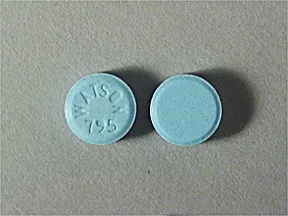 | |
| Dicyclomine (Bentyl) - | 10 mg capsule | 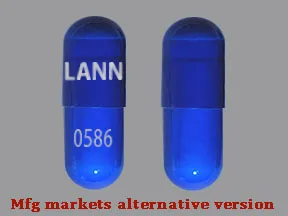 | |
| Dicyclomine (Bentyl) - | 10 mg capsule | 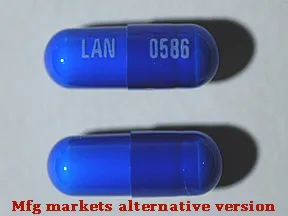 | |
| Dicyclomine (Bentyl) - | 10 mg/5 mL solution | 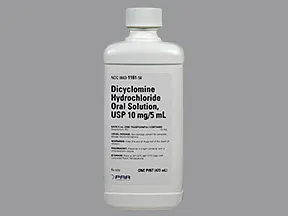 | |
| Dicyclomine (Bentyl) - | 10 mg capsule |  | |
| Dicyclomine (Bentyl) - | 10 mg capsule | 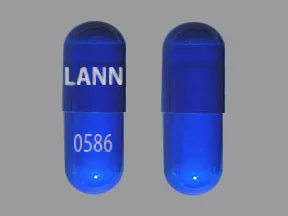 | |
| Dicyclomine (Bentyl) - | 20 mg tablet |  | |
| Dicyclomine (Bentyl) - | 10 mg capsule | 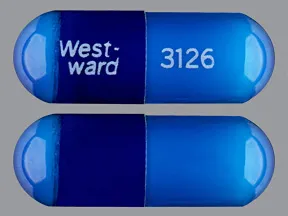 | |
| Dicyclomine (Bentyl) - | 20 mg tablet | 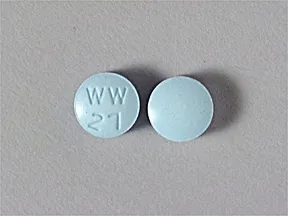 | |
| Dicyclomine (Bentyl) - | 10 mg capsule | 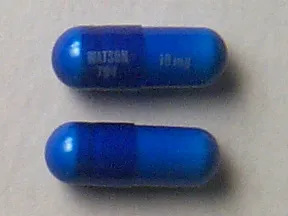 | |
| Dicyclomine (Bentyl) - | 10 mg capsule |  | |
| Dicyclomine (Bentyl) - | 10 mg capsule |  | |
| Dicyclomine (Bentyl) - | 10 mg capsule | 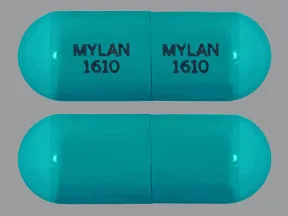 | |
| Dicyclomine (Bentyl) - | 20 mg tablet |  | |
| Dicyclomine (Bentyl) - | 10 mg/5 mL solution |  | |
| Dicyclomine (Bentyl) - | 10 mg capsule | 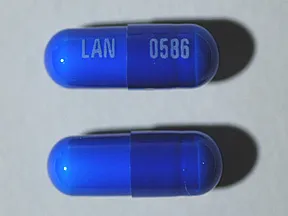 |
Copyright © 2010 First DataBank, Inc.
Patient Handout
dicyclomine intramuscular
NO MONOGRAPH AVAILABLE AT THIS TIME
USES: Consult your pharmacist.
HOW TO USE: Consult your pharmacist.
SIDE EFFECTS: Consult your pharmacist.In the US -Call your doctor for medical advice about side effects. You may report side effects to FDA at 1-800-FDA-1088 or at www.fda.gov/medwatch.In Canada - Call your doctor for medical advice about side effects. You may report side effects to Health Canada at 1-866-234-2345.
PRECAUTIONS: Consult your pharmacist.
DRUG INTERACTIONS: Consult your pharmacist.Keep a list of all your medications with you, and share the list with your doctor and pharmacist.
OVERDOSE: If someone has overdosed and has serious symptoms such as passing out or trouble breathing, call 911. Otherwise, call a poison control center right away. US residents can call their local poison control center at 1-800-222-1222. Canada residents can call a provincial poison control center.
NOTES: No monograph available at this time.
MISSED DOSE: Consult your pharmacist.
STORAGE: Consult your pharmacist.Do not flush medications down the toilet or pour them into a drain unless instructed to do so. Properly discard this product when it is expired or no longer needed. Consult your pharmacist or local waste disposal company for more details about how to safely discard your product.
Information last revised July 2016. Copyright(c) 2024 First Databank, Inc.
IMPORTANT: HOW TO USE THIS INFORMATION: This is a summary and does NOT have all possible information about this product. This information does not assure that this product is safe, effective, or appropriate for you. This information is not individual medical advice and does not substitute for the advice of your health care professional. Always ask your health care professional for complete information about this product and your specific health needs.
Formulary
Adding plans allows you to compare formulary status to other drugs in the same class.
To view formulary information first create a list of plans. Your list will be saved and can be edited at any time.
Adding plans allows you to:
- View the formulary and any restrictions for each plan.
- Manage and view all your plans together – even plans in different states.
- Compare formulary status to other drugs in the same class.
- Access your plan list on any device – mobile or desktop.






